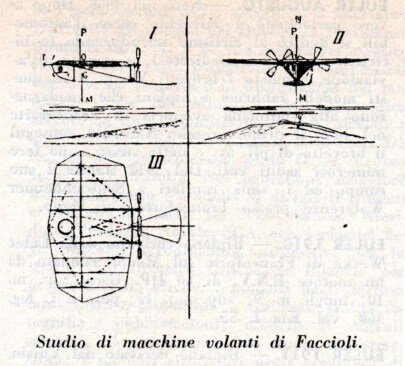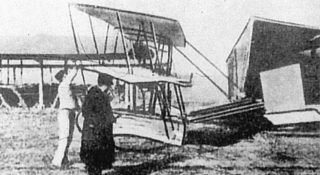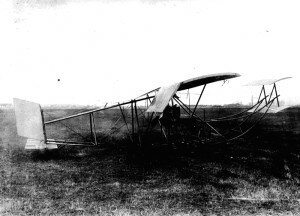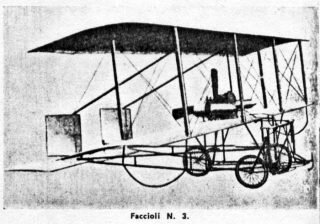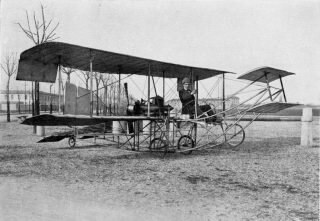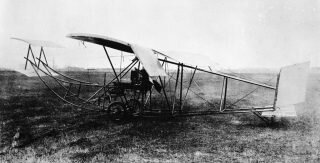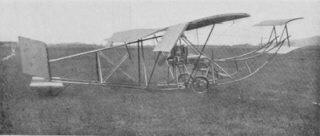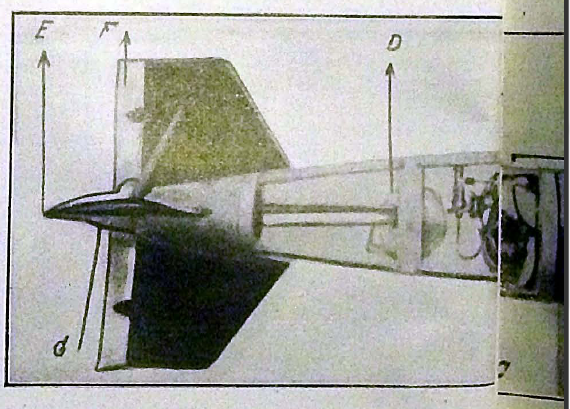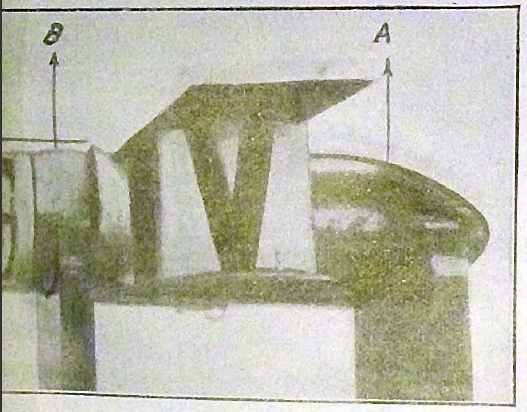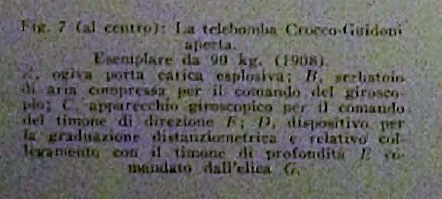You are using an out of date browser. It may not display this or other websites correctly.
You should upgrade or use an alternative browser.
You should upgrade or use an alternative browser.
Italian Little Known Light Aircraft
- Thread starter hesham
- Start date
- Joined
- 26 May 2006
- Messages
- 34,928
- Reaction score
- 15,798
here is a Beltrame Colibri tail-first canard light aircraft of 1938,from Jane's All
the World's Aircraft 1938.
From Ailes 16/11/1962,
a 3-view.
Attachments
- Joined
- 25 July 2007
- Messages
- 4,299
- Reaction score
- 4,198
What was those ?,
The sketch on the left was Mario Calderara idealized notion of a seaplane (in contrast with the heavily-strutted, triple-pontooned idrovolante that he actually built).
The 'Elicottero Marchetti 1912' is obvious but I'm not sure about that date. I suspect this to be Marchetti's contentious 1922 freelance design for a Regia Marina observation helicopter.
Attachments
- Joined
- 25 July 2007
- Messages
- 4,299
- Reaction score
- 4,198
here is a Beltrame Colibri tail-first canard light aircraft ...
Perhaps appropriately for such a small airplane, Milan-based Quito Beltrame was best known for producing flying models - as the Fabbrica Italiana Aeromodelli Quito Bertrame.
BTW, photo 2 in Reply #9 was taken at the 1937 Milan Fair - Salone internazionale aeronautico. This display was listed as a " Modello dell'areo "Colibrì" ... which I assume to mean a mockup: http://www.lombardiabeniculturali.it/fotografie/schede/IMM-u3010-0003703/
- Joined
- 26 May 2006
- Messages
- 34,928
- Reaction score
- 15,798
A 3-view to CNA.15 and CNA.25.
Unfortunately this company and it's designation number was completely a mystery ?,I know they produced several other
aircraft,but no-sense for this series ?.
- Joined
- 25 July 2007
- Messages
- 4,299
- Reaction score
- 4,198
Unfortunately this company and it's designation number was completely a mystery ?,I know they produced several other
aircraft,but no-sense for this series ?.
The CNA corporate history is a little convoluted but not really a mystery.
CNA aircraft designs were originally given Greek letter names - Beta, Delta, Eta, Teta (Italian for Theta), ... but they don't seem to be in order (I can't find alfa, gamma, or zeta). In 1935, designations shift to numerals - the CNA 15 and CNA 25 that you've mentioned. Then there is the distinct PM-1 of 1939/'40 (standing for Politecnico di Milano). CNA's original aircraft developments all seem to be experimental types built under contract to the Ministero dell’Aeronautica. CNA also developed a range of series production engines (with numerical designations prefixed by 'C') for light aircraft.
The corporate identity changed often. CNA was established in 1920 by il conte Giovanni Bonmartini but it existed under a number of names. The earliest incarnation was the Cooperativa Nazionale Aeronautica of March 1920 relating to the flying school at Rome (Cerveteri). In late November 1921, the firm becomes the Compagnia di Navigazione Aerea. Then, in 1922, another renaming for a joint venture with Ing Giovanni Pegna - the Costruzione Navali Aeronautsche.
Costruzione Navali Aeronautsche projects were the unbuilt multi-rotor Elicottero and Leonardo da Vinci (16-engined transatlantic idrovolante); the 1923 Pegna Bonmartini P.B.N. 4-engined (push-pull) biplane (aka Piaggio P.3); the 1923 single-seat ultralight Pegna-Bonmartini Rondine ('Swallow', aka CNA PB Rondine, Piaggio P.1); the unbuilt 2-seat Pegna-Bonmartini Rondone ('Swift', 45 hp Anzani); the built Pegna-Bonmartini Rondone Tipo 2; and the Caccia Pegna (aka Piaggio P.2). See: https://modellismoitalia.altervista.org/pegna-bonmartini/
The final rebranding occurred after Pegna and Bonmartini parted ways. CNA then stood for the Compagnia Nazionale Aeronautica. In 1934 Bonmartini sold CNA to Caproni. Small-scale series production began of Caproni Ca.100s (1935-1937) and SAIMAN 202s (1940-1941). This was a fairly small operation - total production of all types by CNA was only 188 airframes.
Original Designs built by the Compagnia Nazionale Aeronautica
CNA Beta - 193? (??) no other details
- Beta: 1 x 170-180 hp CNA C.7 9-cylinder radial engine
CNA Delta - 1931 trimotor low-winged passenger monoplane
- CNA Delta: 2-4 passengers, optional postal aircraft
3 x 90 hp Fiat A.50 radials, alt: 138 hp A.54, 160 hp CNA C.7
- CNA Delta: Mixed construction (wood & fabric-covered steel-tube
-- http://tof.canardpc.com/preview2/2a768858-e3d9-4cf3-9c30-1fe7f08dd3ad.jpg
CNA Eta - 1933 1-or-2-seat parasol-winged lightplane, x 1*
- CNA Eta: Tandem or solo seat, landplane or on floats
- CNA Eta: (Orig.) 1 x 180 hp CNA C.7 9-cylinder radial
-- Single-seat float Eta FAI C.II altitude record, 8,411 m
-- Single-seat land Eta FAI C.II altitude record, 10,008 m
- CNA Eta: (Mod.) 1 x 150 hp CNA C.VI 6-cyl., span 10.00 m
-- 2-seat float Eta FAI C.I 100 km circuit record, 192.62 km/h
-- * Some sources say x 2 (more likely same airframe modified)
-- http://www.airwar.ru/image/idop/law1/eta/eta-1.jpg
-- http://www.airwar.ru/image/idop/law1/eta/eta-2.jpg
CNA 2* Merah - 1934 2-seat low-wing monoplane, x 1
- CNA 2 Merah: 1 x (??) hp CNA (type?) engine, span (??) m
-- * See hesham's reply #82
CNA Teta - 1933 tandem 2-seat, single-engined light biplane
- Teta: Radial engine, poss. highly mod. Breda Ba.25 (??)
- Teta: (??) No other details
CNA 15 - 1935 4-seat cantilever low-winged sportsplane
- CNA 15: Designed specif. for Littorio sports a/c races
- CNA 15: Parallel development to high-wing CNA 25 (qv)
- CNA 15: 1 x 150 hp CNA C-VI IRC.43 6-cyl., span 11.78 m
-- 1937, turbocharger increased ceiling to 9,000 metres
-- CNA 15 MM307 to Luigi Tonegutti (Verona) 1939, I-VIVI
CNA 25 - 1935 4-seat cantilever high-winged sportsplane
- CNA 25: Parallel development to low-winged CNA 15 (qv)
- CNA 25: 1 x 150 hp CNA C-VI IRC.43 6-cyl., span 11.78 m
- CNA 25: Lower-performing CNA 25 not further developed
- 3v: http://www.airwar.ru/image/idop/law1/cna25/cna25-1.gif
CNA PM.1 - (Politecnico di Milano) 1939 student lightplane, x 1*
- PM.1: 2-seat cabin a/c with a cantilever high-wing monoplane
- PM.1: Designed for a student competition, design begun 1938
- PM.1: 1 x 60 hp CNA D.4 air-cooled HO4 engine , span 10.60 m
- PM.1: Plywood-covered wooden airframe, side-by-side seating
-- Assigned reg. I-ACGM in 1940 by Ministero dell’Aeronautica
-- * Aug 1942 order x 10, airframes destroyed by bombing July 1943
-- By the PM's Instituto di Construzioni Aeronautische del Regio
Does anyone have more on CNA aircraft?
Last edited:
- Joined
- 25 July 2007
- Messages
- 4,299
- Reaction score
- 4,198
From, Italian Civil and Military Aircraft 1930-1945
Thanks for that hesham. I've added those detail to my list. I had the spelling wrong ... but I still have absolutely no idea what merah means
- Joined
- 25 July 2007
- Messages
- 4,299
- Reaction score
- 4,198
hesham: About adding those Beta details, there's a handful of suspect things about your Italian Civil and Military Aircraft, 1930-1945 snippet ...
- The "single-engined two-seat high-wing monoplane" also matches the Eta.
-- Could just be coincidence, or Beta led to Eta ... but see FAI records below.
- The CNA C.7 was a 9-cylinder radial of 170-180 hp (not a "seven-cylinder radial of 200 h.p.")
- Dating the CNA Beta to 1932 puts it a year later than the more complex Delta.
-- This is possible (since there seems to have been no strict ordering) but is it likely?
- "The Beta set several international records, piloted by Renato Donati and Furio Niclot."
-- And yet, the Fédération Aéronautique Internationale website has no such records listed.
A search of the Fédération Aéronautique Internationale website for Renato Donati returns 4 x FAI records. They are:
C.I - 20 Jan 1930, Fiat AS.1 (Fiat A.50) - Closed Circuit (2,746.20 km)
- Light 2-seat landplane, with Gino Capannini
C.I - 20 Feb 1932, Fiat AS.1 (Fiat A.50) - Altitude (6,782 m)
- Light 2-seat landplane, with Gino Capannini
C.I - 30 Dec 1932, Fiat AS.1CNA (CNA C.7) - Altitude (9,282 m)
- Light 2-seat landplane, with Gino Capannini
C - 11 Apr 1934, Caproni 114 (Bristol Mercury) - Altitude (14,433 m)
- Light single-seat landplane
A similar search for Furio Niclot returns 9 x FAI records. They are:
C.bis I - 28 Dec 1933, Fiat AS.1 (CNA C.7) - Altitude (7,362 m)
- Light 2-seat floatplane, with Mariano Lanciani
C.bis II - 06 Nov 1932, CNA Eta (CNA C.7) - Altitude (8,411 m)
- Light single-seat floatplane
C.I - 24 Dec 1933, CNA Eta (CNA C.7) - Altitude (10,008 m)
- Light single-seat landplane
C - 01 Apr 1937, Breda 88 (Isotta-Fraschini) - Speed over 100 km (517.84 km/h)
C - 10 Apr 1937, Breda 88 (Isotta-Fraschini) - Speed over 1,000 km (475.55 km/h)
C - 05 Dec 1937, Breda 88 (Piaggio P.XI RC) - Speed over 100 km (554.36 km/h)
C - 09 Dec 1937, Breda 88 (Piaggio P.XI RC) - Speed over 1,000 km (524.19 km/h)
C - 09 Dec 1937, Breda 88 (Piaggio P.XI RC) - Speed over 1,000 km/500 kg (524.19 km/h)
C - 09 Dec 1937, Breda 88 (Piaggio P.XI RC) - Speed over 1,000 km/1,000 kg (524.19 km/h)
So, did J. W. Thompson just get it wrong on the Beta? Or did he conflate Beta with Eta? Did he fail to check FAI listings? With such 'question marks' hanging, I am unsure as to how to proceed
- The "single-engined two-seat high-wing monoplane" also matches the Eta.
-- Could just be coincidence, or Beta led to Eta ... but see FAI records below.
- The CNA C.7 was a 9-cylinder radial of 170-180 hp (not a "seven-cylinder radial of 200 h.p.")
- Dating the CNA Beta to 1932 puts it a year later than the more complex Delta.
-- This is possible (since there seems to have been no strict ordering) but is it likely?
- "The Beta set several international records, piloted by Renato Donati and Furio Niclot."
-- And yet, the Fédération Aéronautique Internationale website has no such records listed.
A search of the Fédération Aéronautique Internationale website for Renato Donati returns 4 x FAI records. They are:
C.I - 20 Jan 1930, Fiat AS.1 (Fiat A.50) - Closed Circuit (2,746.20 km)
- Light 2-seat landplane, with Gino Capannini
C.I - 20 Feb 1932, Fiat AS.1 (Fiat A.50) - Altitude (6,782 m)
- Light 2-seat landplane, with Gino Capannini
C.I - 30 Dec 1932, Fiat AS.1CNA (CNA C.7) - Altitude (9,282 m)
- Light 2-seat landplane, with Gino Capannini
C - 11 Apr 1934, Caproni 114 (Bristol Mercury) - Altitude (14,433 m)
- Light single-seat landplane
A similar search for Furio Niclot returns 9 x FAI records. They are:
C.bis I - 28 Dec 1933, Fiat AS.1 (CNA C.7) - Altitude (7,362 m)
- Light 2-seat floatplane, with Mariano Lanciani
C.bis II - 06 Nov 1932, CNA Eta (CNA C.7) - Altitude (8,411 m)
- Light single-seat floatplane
C.I - 24 Dec 1933, CNA Eta (CNA C.7) - Altitude (10,008 m)
- Light single-seat landplane
C - 01 Apr 1937, Breda 88 (Isotta-Fraschini) - Speed over 100 km (517.84 km/h)
C - 10 Apr 1937, Breda 88 (Isotta-Fraschini) - Speed over 1,000 km (475.55 km/h)
C - 05 Dec 1937, Breda 88 (Piaggio P.XI RC) - Speed over 100 km (554.36 km/h)
C - 09 Dec 1937, Breda 88 (Piaggio P.XI RC) - Speed over 1,000 km (524.19 km/h)
C - 09 Dec 1937, Breda 88 (Piaggio P.XI RC) - Speed over 1,000 km/500 kg (524.19 km/h)
C - 09 Dec 1937, Breda 88 (Piaggio P.XI RC) - Speed over 1,000 km/1,000 kg (524.19 km/h)
So, did J. W. Thompson just get it wrong on the Beta? Or did he conflate Beta with Eta? Did he fail to check FAI listings? With such 'question marks' hanging, I am unsure as to how to proceed
- Joined
- 26 May 2006
- Messages
- 34,928
- Reaction score
- 15,798
- Joined
- 25 July 2007
- Messages
- 4,299
- Reaction score
- 4,198
the Beta had high-wing,the Eta had parasol high wing,there is no relationship between them.
Thanks hesham. Have you seen an image of the Beta?
woodville
I really should change my personal text
- Joined
- 15 May 2013
- Messages
- 48
- Reaction score
- 125
- Joined
- 26 May 2006
- Messages
- 34,928
- Reaction score
- 15,798
This designer created 6 airplanes and one Project;
Aristide Faccioli, born in Bologna in 1848 and died in Turin in 1920, was one of the pioneers of Italian aeronautics. In 1909, in the plant of the Piemontese Automobili SPA in Corso Ferrucci 122 in Turin, he designed and built the first entirely Italian aircraft. The test flight that took place over the meadows of the Mirafiori field - on January 13, 1909 - ended in an unhappy way; the aircraft, piloted by Mario Faccioli, son of the designer, was damaged on landing, probably due to the lack of experience of the pilot himself. The aircraft - after modifications and repairs - continued its flights from June 1909 to February 1910 on the Piazza d'Armi in Venaria Reale. After this aircraft, other models were built and tested by Faccioli in biplane, triplane and monoplane configurations. Eng. Aristide Faccioli did not have a happy life: he lost his son in a flight accident in 1915 and, in 1920, tried by discouragement and disappointments, he took his own life.
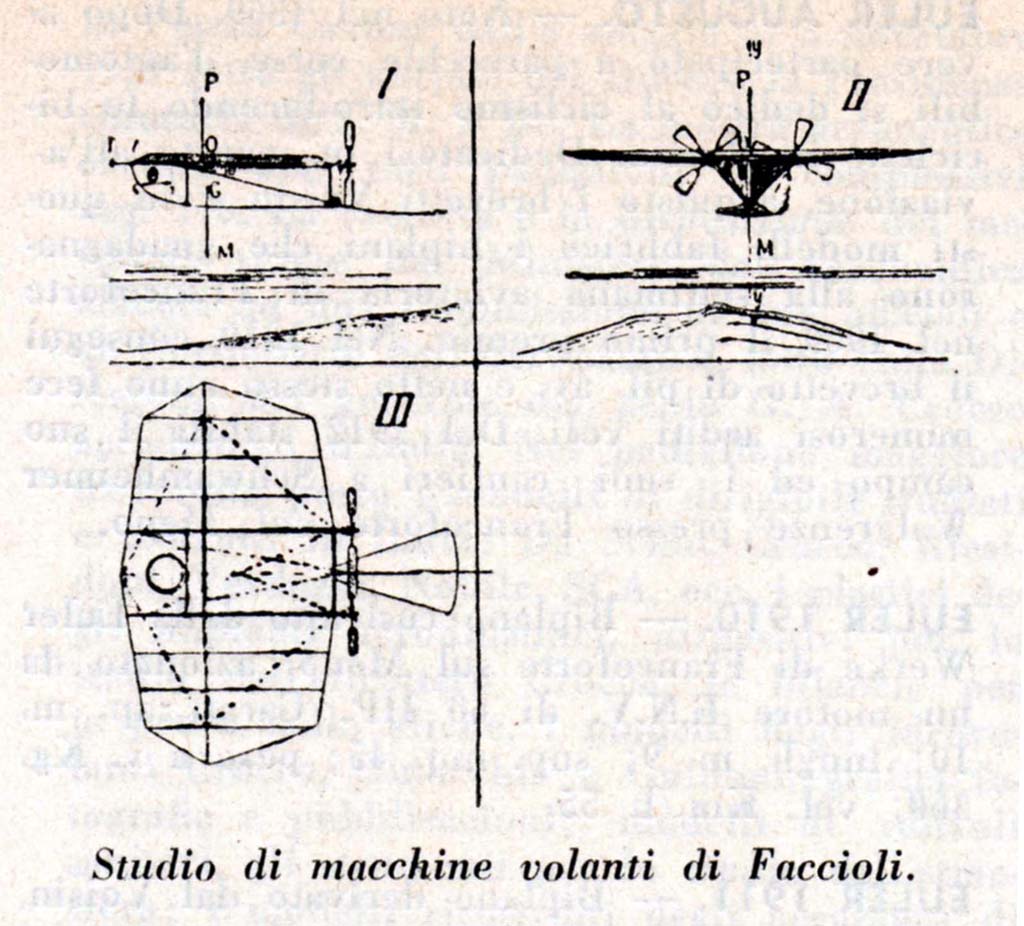
 gavs-torino.com
gavs-torino.com
Aristide Faccioli, born in Bologna in 1848 and died in Turin in 1920, was one of the pioneers of Italian aeronautics. In 1909, in the plant of the Piemontese Automobili SPA in Corso Ferrucci 122 in Turin, he designed and built the first entirely Italian aircraft. The test flight that took place over the meadows of the Mirafiori field - on January 13, 1909 - ended in an unhappy way; the aircraft, piloted by Mario Faccioli, son of the designer, was damaged on landing, probably due to the lack of experience of the pilot himself. The aircraft - after modifications and repairs - continued its flights from June 1909 to February 1910 on the Piazza d'Armi in Venaria Reale. After this aircraft, other models were built and tested by Faccioli in biplane, triplane and monoplane configurations. Eng. Aristide Faccioli did not have a happy life: he lost his son in a flight accident in 1915 and, in 1920, tried by discouragement and disappointments, he took his own life.

Primo volo di FACCIOLI
13 gennaio 1909: Ippodromo di Mirafiori: Primo volo di un aeroplano costruito in Italia. Aristide Faccioli, nato a Bologna nel 1848 e morto a Torino nel 1920 fu uno dei pionieri dell’aeronautica it…
Attachments
Last edited:
- Joined
- 26 May 2006
- Messages
- 34,928
- Reaction score
- 15,798
They were a real airplanes,and from the same source,theand here is a strange concepts for a designer,maybe called Crocco,
the lower two,I don't know if they was a airplanes or not ?.
http://www.avia-it.com/act/biblioteca/periodici/PDF%20Riviste/Ala%20d'Italia/L'ALA%20D'ITALIA%201930%2001.pdf
Crocco aircraft in details.
Attachments
- Joined
- 25 July 2007
- Messages
- 4,299
- Reaction score
- 4,198
The Crocco-Guidoni was a telebomba or gyroscopic-guided glide-bomb. It was designed in 1917 by two Italian military engineers - Gaetano Crocco and Alessandro Guidoni (the latter after whom Guidonia was posthumously named).
-- https://www.secretprojects.co.uk/threads/italian-guided-torpedoes-of-ww-ii.30924/
-- https://www.secretprojects.co.uk/threads/italian-guided-torpedoes-of-ww-ii.30924/
- Joined
- 26 May 2006
- Messages
- 34,928
- Reaction score
- 15,798
Hi,
here is a two Italian airplanes,one for Cabinaire biplane of 1929,and a Cadelli twin
boom monoplane,the later maybe remained a Project.
TUNASPOKER: Link Situs Slot Gacor Gampang Menang & IDN POKER Online
Tunaspoker penyedia daftar link situs slot gacor hari ini gampang menang terbaru dan juga sebagai agen resmi IDN POKER Online terpercaya.www.avia-it.com
For the twin-boom one,translate;
CADELLI CARLO - Aeronautics scholar born in
Trieste in 1860, After long studies, he presented at the Turin International Air Locomotion Exhibition in 1914 the drawings of an apparatus called "Rational Airplane" whose project underwent some essential modifications over the years, but which could not be built due to the invasion of Veneto in 1917 (C. was a resident of Pordenone); he lost everything he had.
He has published: Aeroplane rational (Graphic Arts of Pordenone); From aerostatic to large ascents height (in L'Aeronautica, 1898, Milan); Aeronautical digressions (in La Patria del Friuli, Udine 1911); The Rational Airplane (in Aeronautica, Milan 1929) ; as well as several other articles published in Il Taghamento and an issue published on the occasion
of the inauguration of the Campo dell Comisa (1910).
Last edited:
- Joined
- 26 May 2006
- Messages
- 34,928
- Reaction score
- 15,798
Here is the OSA-135;
TUNASPOKER: Link Situs Slot Gacor Gampang Menang & IDN POKER Online
Tunaspoker penyedia daftar link situs slot gacor hari ini gampang menang terbaru dan juga sebagai agen resmi IDN POKER Online terpercaya.www.avia-it.com
So weird ?,what were those ?,
OSA (Italy) — Officina Sommese Aeronautica produced several light aircraft in the 1930s. The most notable being the OSA.135 side-by-side low-wing cabin tourer with a 130-hp “Alpha 110/1” in January 1937.
Last edited:
- Joined
- 25 July 2007
- Messages
- 4,299
- Reaction score
- 4,198
What was the Alfa Santoni-Franchini Biplane of 1919 ?.
There was a 1910 A.L.F.A. biplane designed by Antonio Santoni and Nino Franchini. Is that the one you meant?
If so, this was a single-engined, pusher, canard biplane. Santoni was the head of A.L.F.A.'s design office. Franchini was a test-driver and mechanic at A.L.F.A. Once built, the biplano was used to showcase the power and reliability of the new A.L.F.A. engine (designed by Giuseppe Merosi). This engine was that from the A.L.F.A. 24HP Corsa racer - a 4 litre, inline 4 cylinder. For aircraft use, output was increased to 36 hp at 1680 rpm and 42 hp at 2200 rpm (although one source claims only 31 hp was generated).
A typical canard biplane of its time, the A.L.F.A. was distinguished by its upturned lower wing tips. Its rear tailplane was in the form of a partially flattened hexagon (enclosing twin, vertical surfaces). The biplano's pilot sat behind the 4-cylinder inline engine which powered twin, shaft-driven pusher propellers. There were narrow-chord, octagonal 'rings' placed in from of those propellers (the latter having the larger diameter). I'm not sure what the function of those 'rings' was intended to be.
In place of the then-usual bamboo struts, Santoni and Franchini employed metal tubing (steel?) intended for making bicycles.
- Joined
- 26 May 2006
- Messages
- 34,928
- Reaction score
- 15,798
So weird ?,what was those ?,
OSA (Italy) — Officina Sommese Aeronautica produced several light aircraft in the 1930s. The most notable being the OSA.135 side-by-side low-wing cabin tourer with a 130-hp “Alpha 110/1” in January 1937.
There was also OSA.200 ?!,who heard about this ?,
Oakland to Ö-UF: Airplane, Aircraft, Aviation Archive Photos
Oakland to Ö-UF airplane/aircraft archive photos, history, specifications and performance data.
www.skytamer.com
List of aircraft (O) - Wikipedia
- Joined
- 25 July 2007
- Messages
- 4,299
- Reaction score
- 4,198
There was also OSA.200 ?!,who heard about this ?
Is there a reference to this designation (outside of Wikipedia lists, I mean)?
- Joined
- 26 May 2006
- Messages
- 34,928
- Reaction score
- 15,798
There was also OSA.200 ?!,who heard about this ?
Is there a reference to this designation (outside of Wikipedia lists, I mean)?
I am afraid not,but please look to reply # 64,the company built many
light aircraft ?.
- Joined
- 11 March 2012
- Messages
- 3,251
- Reaction score
- 3,179
Cute!here is a Beltrame Colibri tail-first canard light aircraft of 1938,from Jane's All
the World's Aircraft 1938.
From Ailes 16/11/1962,
a 3-view.
At first glance, it looks like it suffered the same balance problems as most early canards because the center-of-gravity looks to be too far aft.
Last edited:
- Joined
- 26 May 2006
- Messages
- 34,928
- Reaction score
- 15,798
This designer created 6 airplanes and one Project;
Aristide Faccioli, born in Bologna in 1848 and died in Turin in 1920, was one of the pioneers of Italian aeronautics. In 1909, in the plant of the Piemontese Automobili SPA in Corso Ferrucci 122 in Turin, he designed and built the first entirely Italian aircraft. The test flight that took place over the meadows of the Mirafiori field - on January 13, 1909 - ended in an unhappy way; the aircraft, piloted by Mario Faccioli, son of the designer, was damaged on landing, probably due to the lack of experience of the pilot himself. The aircraft - after modifications and repairs - continued its flights from June 1909 to February 1910 on the Piazza d'Armi in Venaria Reale. After this aircraft, other models were built and tested by Faccioli in biplane, triplane and monoplane configurations. Eng. Aristide Faccioli did not have a happy life: he lost his son in a flight accident in 1915 and, in 1920, tried by discouragement and disappointments, he took his own life.

Primo volo di FACCIOLI
13 gennaio 1909: Ippodromo di Mirafiori: Primo volo di un aeroplano costruito in Italia. Aristide Faccioli, nato a Bologna nel 1848 e morto a Torino nel 1920 fu uno dei pionieri dell’aeronautica it…gavs-torino.com
Please I want to know if any of these aircraft was a military or not ?.
- Joined
- 25 July 2007
- Messages
- 4,299
- Reaction score
- 4,198
the Piazza (d'Armi) in Venaria Reale,was that mean army ?.
No. There are any number of Piazzas d'Armi in Italy - the Venaria Reale version being Turin's.
These Piazzas d'Armi are simply public squares named in honour of the Savoy-era army. (You will also see military-related names like Parco Cavalieri - same deal). Mind you, many of those piazzas were also once military parade grounds.
While it does not change the meaning of the phrase ("parade ground") or the explanation, if we are precise, "Armi" is "arms" in Italian, while "army" in English is "ejercito". Marines, sailors, and airmen could also have parade grounds.the Piazza (d'Armi) in Venaria Reale,was that mean army ?.
No. There are any number of Piazzas d'Armi in Italy - the Venaria Reale version being Turin's.
These Piazzas d'rmsArmi are simply public squares named in honour of the Savoy-era army. (You will also see military-related names like Parco Cavalieri - same deal). Mind you, many of those piazzas were also once military parade grounds.
- Joined
- 3 September 2006
- Messages
- 1,476
- Reaction score
- 1,474
Ejercito is Spanish. Italian is Esercito.while "army" in English is "ejercito".
Oops. Thanks. Dealing with too many languages that are not my own at work these days.Ejercito is Spanish. Italian is Esercito.while "army" in English is "ejercito".
- Joined
- 26 May 2006
- Messages
- 34,928
- Reaction score
- 15,798
Hi,
I think Mr. Nagel was from Germany,but could be also another one had the same
name from Italy ?.
I think Mr. Nagel was from Germany,but could be also another one had the same
name from Italy ?.
Last edited:
richard B
ACCESS: Secret
- Joined
- 17 August 2006
- Messages
- 343
- Reaction score
- 498
Berlin could be a town in the U.S.A. ; quite common ...Hi,
I think Mr. Nagel was from Germany,but could be also another one had the smae
name from Italy ?.
Similar threads
-
Little-Known French Projects and Prototypes
- Started by hesham
- Replies: 746
-
Fiat Projects and Little Known Aircraft
- Started by hesham
- Replies: 92
-
-
Ricci Bros Projects: between the aerial motorcycle and the flying transatlantic
- Started by ermeio
- Replies: 45
-

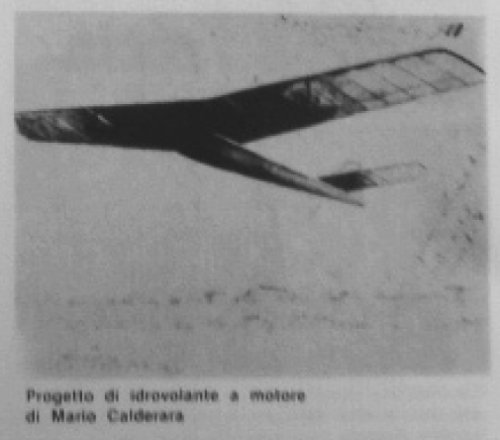
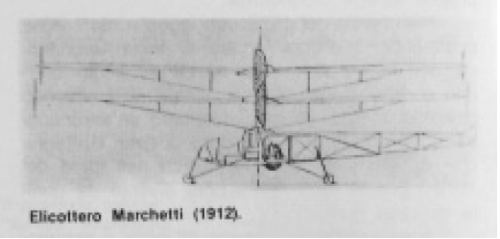
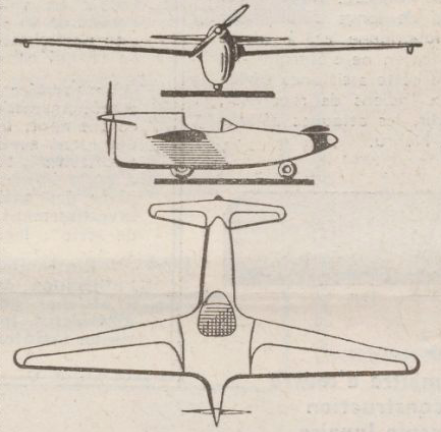
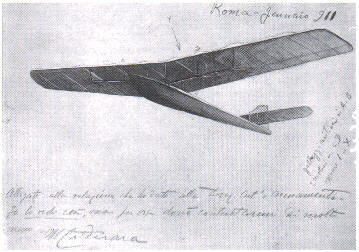
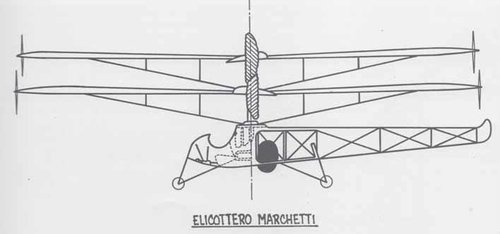
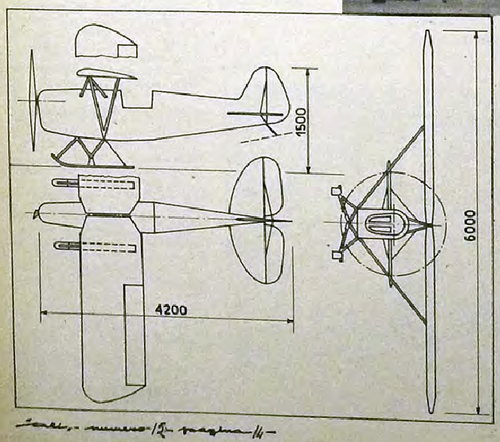
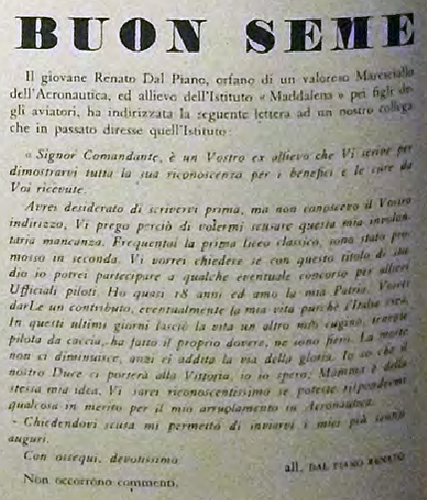

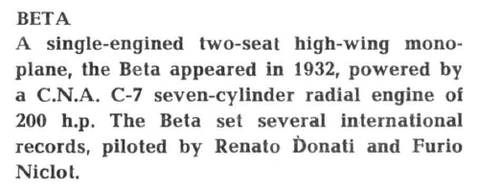
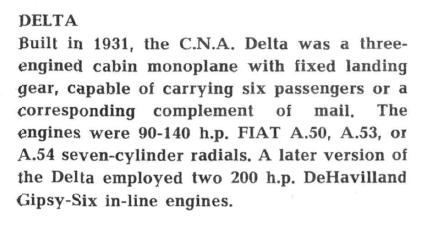
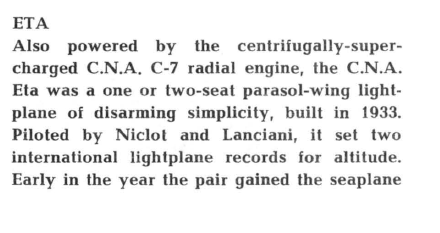
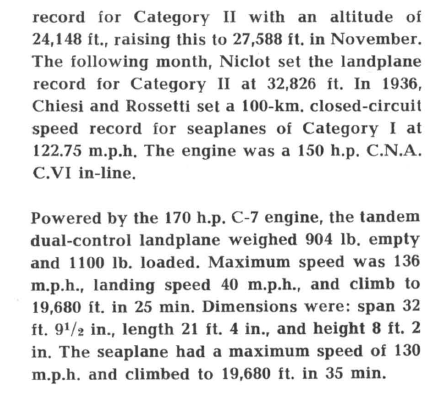
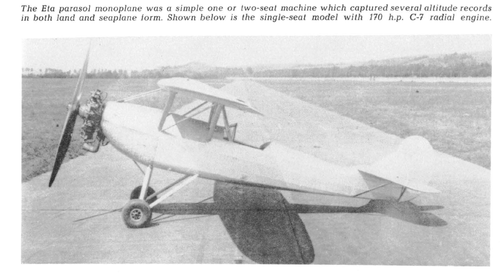
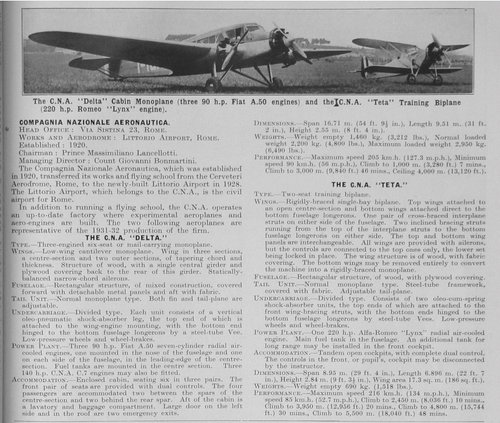
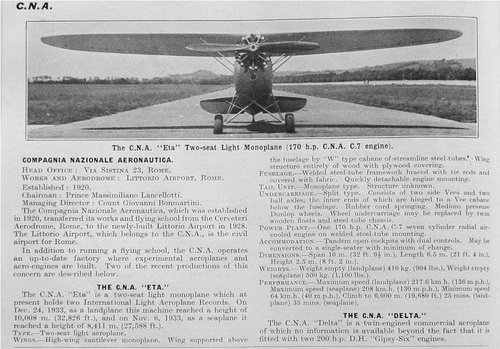
![Les_Ailes___journal_hebdomadaire_[...]_bpt6k65683047_3.jpeg](/data/attachments/184/184445-055f4fb6ca6f3d500efac68b358e935a.jpg)
